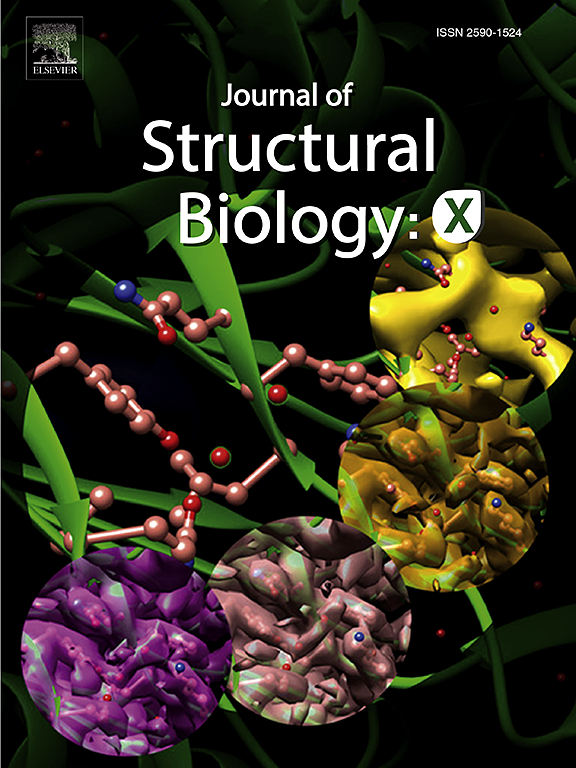Characterization of SARS-CoV-2 nucleocapsid protein oligomers
IF 2.7
3区 生物学
Q3 BIOCHEMISTRY & MOLECULAR BIOLOGY
引用次数: 0
Abstract
Oligomers of the SARS-CoV-2 nucleocapsid (N) protein are characterized by pronounced instability resulting in fast degradation. This property likely relates to two contrasting behaviors of the N protein: genome stabilization through a compact nucleocapsid during cell evasion and genome release by nucleocapsid disassembling during infection. In vivo, the N protein forms rounded complexes of high molecular mass from its interaction with the viral genome. To study the N protein and understand its instability, we analyzed degradation profiles under different conditions by size-exclusion chromatography and characterized samples by mass spectrometry and cryo-electron microscopy. We identified self-cleavage properties of the N protein based on specific Proprotein convertases activities, with Cl- playing a key role in modulating stability and degradation. These findings allowed isolation of a stable oligomeric complex of N, for which we report the 3D structure at ∼6.8 Å resolution. Findings are discussed considering available knowledge about the coronaviruses’ infection cycle.

SARS-CoV-2 核苷酸蛋白寡聚体的特征。
SARS-CoV-2 核苷酸蛋白(N)的寡聚体具有明显的不稳定性,导致快速降解。这种特性可能与 N 蛋白的两种截然不同的行为有关:在细胞逃避过程中通过紧密的核壳稳定基因组,以及在感染过程中通过核壳分解释放基因组。在体内,N 蛋白与病毒基因组相互作用形成高分子量的圆形复合物。为了研究 N 蛋白并了解其不稳定性,我们通过大小排阻色谱法分析了不同条件下的降解曲线,并通过质谱法和冷冻电镜法对样品进行了表征。我们根据特定的蛋白转化酶活性确定了 N 蛋白的自我裂解特性,其中 Cl- 在调节稳定性和降解方面起着关键作用。通过这些发现,我们分离出了稳定的 N 低聚物复合物,并报告了其 6.8 Å 分辨率的三维结构。考虑到冠状病毒感染周期的现有知识,我们对研究结果进行了讨论。
本文章由计算机程序翻译,如有差异,请以英文原文为准。
求助全文
约1分钟内获得全文
求助全文
来源期刊

Journal of structural biology
生物-生化与分子生物学
CiteScore
6.30
自引率
3.30%
发文量
88
审稿时长
65 days
期刊介绍:
Journal of Structural Biology (JSB) has an open access mirror journal, the Journal of Structural Biology: X (JSBX), sharing the same aims and scope, editorial team, submission system and rigorous peer review. Since both journals share the same editorial system, you may submit your manuscript via either journal homepage. You will be prompted during submission (and revision) to choose in which to publish your article. The editors and reviewers are not aware of the choice you made until the article has been published online. JSB and JSBX publish papers dealing with the structural analysis of living material at every level of organization by all methods that lead to an understanding of biological function in terms of molecular and supermolecular structure.
Techniques covered include:
• Light microscopy including confocal microscopy
• All types of electron microscopy
• X-ray diffraction
• Nuclear magnetic resonance
• Scanning force microscopy, scanning probe microscopy, and tunneling microscopy
• Digital image processing
• Computational insights into structure
 求助内容:
求助内容: 应助结果提醒方式:
应助结果提醒方式:


